Related Research Articles
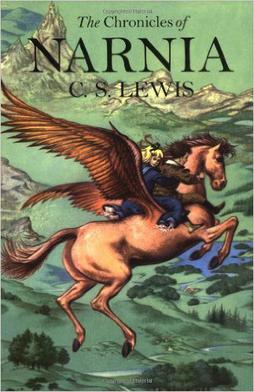
The Chronicles of Narnia is a series of seven portal fantasy novels by British author C. S. Lewis. Illustrated by Pauline Baynes and originally published between 1950 and 1956, The Chronicles of Narnia has been adapted for radio, television, the stage, film, and video games. The series is set in the fictional realm of Narnia, a fantasy world of magic, mythical beasts and talking animals. It narrates the adventures of various children who play central roles in the unfolding history of the Narnian world. Except in The Horse and His Boy, the protagonists are all children from the real world who are magically transported to Narnia, where they are sometimes called upon by the lion Aslan to protect Narnia from evil. The books span the entire history of Narnia, from its creation in The Magician's Nephew to its eventual destruction in The Last Battle.
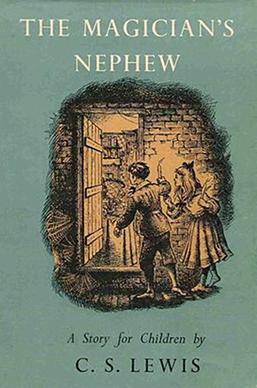
The Magician's Nephew is a portal fantasy children's novel by C. S. Lewis, published in 1955 by The Bodley Head. It is the sixth published of seven novels in The Chronicles of Narnia (1950–1956). In recent editions, which sequence the books according to Narnia history, it is volume one of the series. Like the others, it was illustrated by Pauline Baynes whose work has been retained in many later editions. The Bodley Head was a new publisher for The Chronicles, a change from Geoffrey Bles who had published the previous five novels.
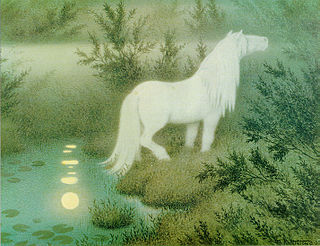
A fantasy world or fictional world is a world created for fictional media, such as literature, film or games. Typical fantasy worlds feature magical abilities. Some worlds may be a parallel world connected to Earth via magical portals or items ; an imaginary universe hidden within ours ; a fictional Earth set in the remote past or future ; an alternative version of our History ; or an entirely independent world set in another part of the universe.
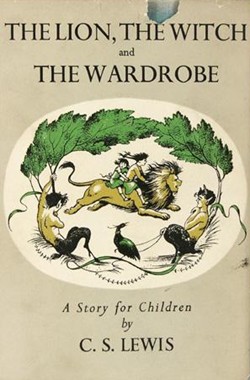
The Lion, the Witch and the Wardrobe is a portal fantasy novel for children by C. S. Lewis, published by Geoffrey Bles in 1950. It is the first published and best known of seven novels in The Chronicles of Narnia (1950–1956). Among all the author's books, it is also the most widely held in libraries. It was the first of The Chronicles of Narnia to be written and published, but is marked as volume two in recent editions that are sequenced according the stories' internal chronology. Like the other Chronicles, it was illustrated by Pauline Baynes, and her work has been retained in many later editions.
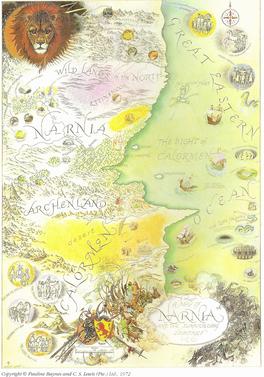
Narnia is a fantasy world created by C. S. Lewis as the primary location for his series of seven fantasy novels for children, The Chronicles of Narnia. The world is named after the country of Narnia, where much of the Chronicles takes place.

The Voyage of the Dawn Treader is a portal fantasy novel for children by C. S. Lewis, published by Geoffrey Bles in 1952. It was the third published of seven novels in The Chronicles of Narnia (1950–1956). Macmillan US published an American edition within the calendar year. with substantial revisions that were retained in the United States until 1994. It is volume five in recent editions, which are sequenced according to the novels' internal chronology. Like the other Chronicles of Narnia, The Voyage of the Dawn Treader was illustrated by Pauline Baynes, and her work has been retained in many later editions.
Charn is a fictional city appearing in the 1955 book The Magician's Nephew, the sixth book published in C. S. Lewis's Chronicles of Narnia, written as a prequel to The Lion, the Witch, and the Wardrobe. Charn, and the world of which it is the capital city, are the birthplace of Jadis, also known as the White Witch, who later seizes control of Narnia.
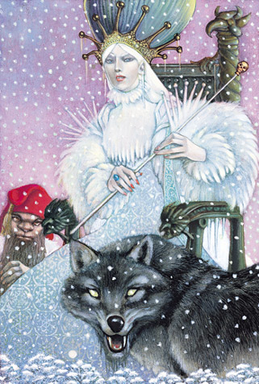
Jadis is a fictional character and the main antagonist of The Lion, the Witch and the Wardrobe (1950) and The Magician's Nephew (1955) in C. S. Lewis's series, The Chronicles of Narnia. She is commonly referred to as the White Witch in The Lion, the Witch and the Wardrobe, as she is the Witch who froze Narnia in the Hundred Years Winter.

Peter Pevensie is a fictional character in C. S. Lewis's The Chronicles of Narnia book series. Peter appears in three of the seven books; as a child and a principal character in The Lion, the Witch and the Wardrobe and Prince Caspian, and as an adult in The Last Battle. He is only mentioned in The Horse and His Boy in which he is away on the northern frontier fighting giants and in The Voyage of the Dawn Treader in which he is studying under the tutelage of Professor Kirke.

Eustace Clarence Scrubb is a fictional character in C. S. Lewis's Chronicles of Narnia. He appears in The Voyage of the Dawn Treader, The Silver Chair, and The Last Battle. In The Voyage of the Dawn Treader, he is accompanied by Edmund and Lucy Pevensie, his cousins. In The Silver Chair and The Last Battle, he is accompanied by Jill Pole, a classmate from his school.

Prince Caspian is a fictional character in The Chronicles of Narnia by C. S. Lewis. He is featured in three books in the series: Prince Caspian, The Voyage of the Dawn Treader, and The Silver Chair. He also appears at the end of The Last Battle.
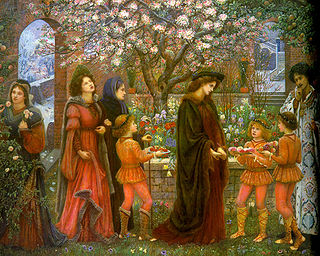
A magician, also known as an archmage, mage, magus, magic-user, spellcaster, enchanter/enchantress, sorcerer/sorceress, warlock, witch, or wizard, is someone who uses or practices magic derived from supernatural, occult, or arcane sources. Magicians enjoy a rich history in mythology, legends, fiction, and folklore, and are common figures in works of fantasy, such as fantasy literature and role-playing games.
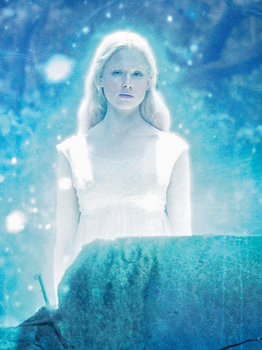
Ramandu's daughter, also known as Lilliandil in the 2010 film version of The Voyage of the Dawn Treader, is a fictional character from The Chronicles of Narnia by C. S. Lewis. Introduced in the 1952 book The Voyage of the Dawn Treader, she aids Caspian X and the crew of Dawn Treader to break an enchantment on three of the Seven Great Lords of Narnia. Eventually she becomes Queen of Narnia, after marrying Caspian X, and bears his son, Rilian. In the 1953 novel The Silver Chair, the Lady of the Green Kirtle, in the form of a snake, kills her though she later reappears in the 1956 book The Last Battle. The character appears in multiple adaptations of the book series; the television serial The Chronicles of Narnia, where she is portrayed by Gabrielle Anwar, and The Chronicles of Narnia film series, where Laura Brent plays the role.

Aslan is a major character in C. S. Lewis's The Chronicles of Narnia series. Unlike any other character in the Narnian series, Aslan appears in all seven chronicles. Aslan is depicted as a talking lion and is described as the King of Beasts, the son of the Emperor-Over-the-Sea, and the King above all High Kings in Narnia.
The following outline is provided as an overview of and topical guide to Narnia:

The following outline is provided as an overview of and topical guide to fantasy:
Magical creatures are an important aspect of the fictional world of Narnia contained within The Chronicles of Narnia book series and connected media originally created by C. S. Lewis. Throughout the seven books of the series, the protagonists encounter a variety of these creatures as they travel throughout Narnia and the surrounding lands and seas, including Archenland, Calormen, and the Great Eastern Ocean.
References
- ↑ Jeffrey Andrew Weinstock (1 April 2016). The Ashgate Encyclopedia of Literary and Cinematic Monsters. Routledge. p. 494. ISBN 978-1-317-04425-3.
- ↑ Pseudo-Apollodorus, Bibliotheca 2.5.11
- ↑ Hyginus, Fabulae 31 & 157
- ↑ Statius, Thebaid 6.893 ff.
- ↑ La Tavola ritonda, o L'istoria di Tristano: 1: Prefazione, testo dell'opera (in Italian). presso Gaetano Romagnoli. 1864.
- ↑ Lewis, C.S. The Chronicles of Narnia: The Lion the Witch and the Wardrobe.
- ↑ Journey into Mystery #103. Marvel Comics.